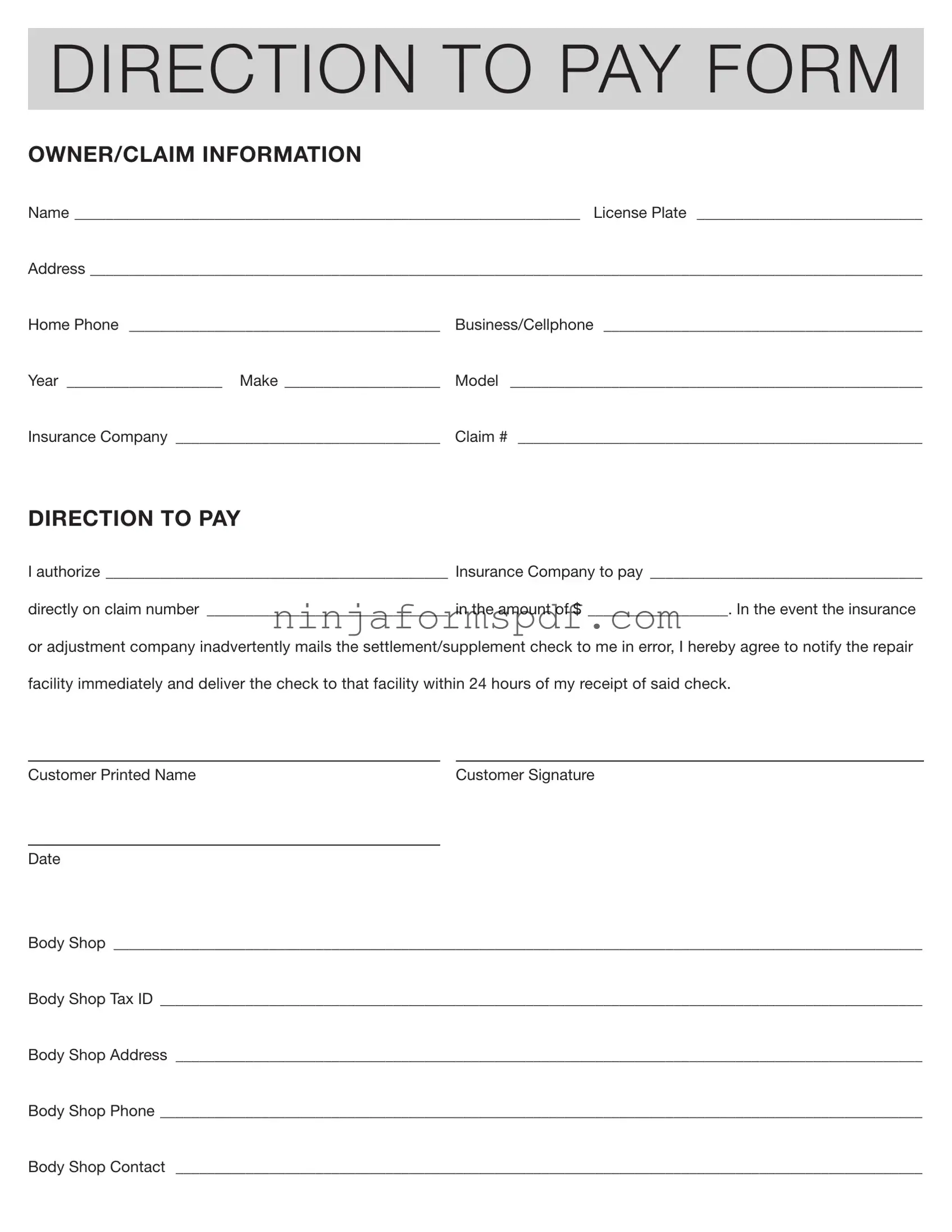What is an Authorization And Direction to Pay form?
An Authorization and Direction to Pay form is a document that permits an insurance company to directly pay a third party, usually a body shop, for repairs or services rendered in connection with a claim. This form typically includes details about the owner or claimant, the vehicle involved, the insurance company, and the specific claim number and amount to be paid.
How does this form benefit me as a vehicle owner?
Using this form streamlines the payment process after an accident or damage to your vehicle. It allows the insurance company to pay the repair shop directly, saving you from having to front the cost and wait for reimbursement. This can help mitigate stress and ensure repairs begin and conclude more swiftly.
What information do I need to complete this form?
To fill out this form accurately, you'll need your personal information (name, address, and phone numbers), details about your vehicle (year, make, model, and license plate number), and specifics about your insurance claim (insurance company, claim number, and the payment amount).
Why do I need to provide my vehicle’s make and model?
Providing the make and model of your vehicle helps the insurance company and the repair facility ensure that the payment is applied to the correct claim, especially when dealing with multiple claims or clients. This clarity is crucial for a smooth and error-free transaction.
What happens if the insurance check is mistakenly sent to me?
The form typically includes a clause that outlines your responsibility in such a scenario. You agree to notify the repair facility immediately and deliver the check to the facility within 24 hours of receiving it. This is to ensure that the payment process is corrected and proceeds without significant delays.
Is it mandatory to sign the Authorization and Direction to Pay form?
While not always mandatory, signing the form is strongly recommended and often required by the repair facility before proceeding with repairs. It signifies your consent for the insurance company to pay the repair shop directly and ensures that the repair process can start promptly.
Can I revoke this authorization?
Yes, in most cases, you can revoke this authorization. However, the process to do so may vary depending on the jurisdiction and the specific policies of the insurance company or the repair facility. It's best to contact them directly to understand the steps involved in revoking this authorization.
What should I do after submitting this form?
After submitting the form, keep a copy for your records and stay in touch with both the repair facility and your insurance company. Monitoring the progress of your claim and the repairs to your vehicle ensures that everything is proceeding as agreed and that any issues are quickly addressed.
Where can I get an Authorization and Direction to Pay form?
This form is often provided by your insurance company or the repair facility handling your vehicle's repairs. If not automatically offered, ask your insurance agent or the contact at the repair facility for this form to facilitate direct payment for services rendered.

